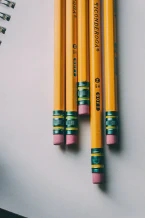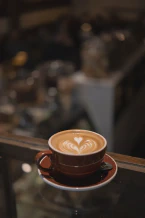Creativity Through Chaos

The Unplayable Piano: How Keith Jarrett’s Performance Soared Despite the Odds
Late in January 1975, a German teenager named Vera Brandes convinced the Cologne Opera House to host a late-night concert of jazz from the American musician, Keith Jarrett. The concert was set to be a big event, with 1,400 people in attendance. However, things took a turn for the worse when Keith arrived to find that the piano he was expected to play was unplayable.
The instrument had a harsh, tinny upper register, with all the felt worn away. The black notes were sticking, the white notes were out of tune, and the pedals didn’t work. To make matters worse, the piano was too small to fill the large space of the Cologne Opera House. Keith was hesitant to perform on such a terrible instrument, and he walked out to sit in his car, leaving Vera to sort out the mess.
Undeterred, Vera got a piano tuner to work on the instrument, but it became clear that it was beyond repair. Desperate to salvage the concert, Vera begged Keith not to cancel, standing in the rain outside his car. After a moment of hesitation, Keith agreed to play, but he refused to touch the unplayable piano.
Despite the odds, Keith stepped out onto the stage of the opera house and began to play. He avoided the upper registers of the piano, instead sticking to the middle tones, which gave the piece a soothing, ambient quality. But because the piano was so quiet, he had to set up these rumbling, repetitive riffs in the bass. He stood up, twisting and pounding down on the keys, desperately trying to create enough volume to reach the people in the back row.
The performance was electrifying, with a peaceful quality, and at the same time, it was full of energy and dynamic. The audience loved it, and the recording of the Köln Concert is now the best-selling piano album and solo jazz album in history.
Keith’s initial instinct was to refuse to play on an unplayable piano, and understandably so. However, he soon realized that he had to hug the mess to achieve greatness. This story illustrates the unexpected advantages of coping with a little mess.
Sometimes, certain kinds of difficulty or obstacles can actually improve our performance, as shown by cognitive psychology. For example, certain fonts that are difficult to read can help us learn more by forcing us to work harder and interpret the information better. Additionally, the randomness and disruption in complexity science can make problem-solving more robust.
Moreover, social psychology has shown that working with strangers and being willing to try stupid things can make us more creative. This idea is also showed by Brian Eno’s Oblique Strategies, a deck of cards used in rock ’n’ roll to disrupt the creative process and make musicians try new things.
In conclusion, the story of Keith Jarrett’s performance teaches us to hug the mess and to try new things, even if they seem difficult or challenging at first. The unexpected advantages of coping with a little mess can lead us to greatness and creativity beyond our imagination.
Overcoming obstacles: the unexpected advantages of coping with a little mess
Life is full of obstacles, and sometimes it feels like the mess just keeps piling up. But what if I told you that facing those messy situations head-on could actually lead to unexpected advantages and improved performance?
Research has shown that certain types of difficulty or obstacles can actually improve our performance in various areas. For example, using difficult fonts to format high school handouts or having weak attentional filters could slow us down and force us to work harder, ultimately leading to better performance and increased learning.
In solving complex problems, we tend to take a step-by-step approach, making marginal gains and improvements along the way. However, adding a dash of randomness and trying out seemingly stupid or counterintuitive ideas can actually make the problem-solving process more robust and less likely to lead to dead ends.
In social situations, having a stranger present can actually improve problem-solving abilities and increase the chances of finding the right answer. This is because having someone unfamiliar in the group disrupts the usual dynamics and can lead to more creative and out-of-the-box thinking.
Even in the world of music, disruptions and mess can lead to some of the best performances and albums. Take Keith Jarrett’s concert in Cologne, for example. Despite being handed an unplayable piano, he hugged the mess and created an electrifying performance that went on to become the best-selling piano album in history. Similarly, Brian Eno’s use of The Oblique Strategies, a deck of cards with disruptive instructions, has led to some of the greatest rock ’n’ roll albums of the last 40 years.
So, the next time you find yourself facing a mess or obstacle, try hugging it instead of resisting it. You never know, it might just lead to unexpected advantages and improved performance.
Exploring the Fascinating World of Cognitive Psychology, Complexity Science, Social Psychology, and Rock ’n’ Roll
From cognitive psychology to complexity science, social psychology, and rock ’n’ roll, the human mind has been the subject of countless studies and experiments over the years. These fields of study have shed light on the complex workings of our brains and how they shape our behaviors, emotions, and interactions with others.
Cognitive psychology is concerned with the mental processes involved in perception, attention, memory, and problem-solving. It examines how we acquire, process, and store information, and how we use this information to make decisions and solve problems.
Complexity science, on the other hand, explores the behavior of complex systems, such as the human brain, using mathematical models and computer simulations. It seeks to understand how the many interacting parts of a system give rise to emergent properties and behaviors.
Social psychology studies how people behave, think, and feel in social situations. It examines how social influences shape our attitudes and behaviors, and how we form and maintain relationships with others.
Finally, rock ’n’ roll has been a cultural force that has influenced society and reflected the changes and struggles of different generations. Its rhythms and lyrics have touched the hearts and minds of millions of people around the world, offering a window into the human experience.
While these fields of study may seem unrelated at first glance, they share a common goal: to better understand the human mind and the complex ways in which it interacts with the world around us. By exploring these fascinating areas of research, we can gain a deeper understanding of ourselves and the world we inhabit.
The Benefits of Difficulty and Obstacles in Enhancing Performance and Creativity
Life is full of challenges, and it is easy to feel overwhelmed and defeated when faced with difficulty and obstacles. However, research suggests that hugging challenges can actually enhance our performance and creativity in unexpected ways.
Cognitive psychology has shown that our brains thrive on challenges, and that tackling difficult tasks can improve our cognitive abilities, such as memory and attention. Complexity science has demonstrated that systems that encounter obstacles often develop new strategies and structures to overcome them, leading to increased adaptability and toughness.
Social psychology has also shed light on the benefits of obstacles. When people face difficulties together, they often experience greater bonding and a sense of shared purpose. And in the world of rock ’n’ roll, some of the greatest music was created under difficult circumstances, such as financial struggles, personal turmoil, and even drug addiction.
So, what does all of this mean for us? It means that when we encounter obstacles in our own lives, we should not shy away from them or become discouraged. Instead, we can hug them as opportunities for growth and development. By facing our challenges head on, we can improve our skills, creativity, and overall well-being.
Of course, this is easier said than done. It can be difficult to maintain a positive attitude in the face of adversity. However, with practice and persistence, we can train our minds to see obstacles as opportunities rather than setbacks.
In conclusion, difficulty and obstacles should not be seen as something to avoid, but rather something to hug. By challenging ourselves, we can develop new skills, enhance our cognitive abilities, and build toughness. So, the next time you face a difficult situation, remember that it could be the key to unlocking your full potential.
Hugging randomness and disruption for better problem-solving
Have you ever found yourself struggling to solve a problem, only to have a sudden breakthrough when something unexpected happens? According to research in cognitive psychology and complexity science, this is not a coincidence. In fact, hugging randomness and disruption can actually make our problem-solving skills more robust and effective.
When we face a problem, our brains tend to automatically try to find the most obvious solution. However, this approach can often lead to “local optima,” where we get stuck in a suboptimal solution because we can’t see a way to improve it. By introducing randomness or disruption into the problem-solving process, we can break free from these local optima and explore different possibilities.
This concept is often applied in computer science and optimization algorithms, but it also has implications for human creativity and innovation. For example, many successful companies encourage their employees to take risks and try new approaches, knowing that some failures along the way can lead to breakthrough ideas.
In social psychology, this idea is related to the concept of “cognitive dissonance,” where we experience discomfort when we encounter information or experiences that don’t fit our existing beliefs or assumptions. By intentionally seeking out new and challenging experiences, we can train our brains to be more flexible and adaptable, making us better problem-solvers in the long run.
In short, when faced with a difficult problem, don’t be afraid to introduce a little randomness or disruption into your approach. Whether it’s trying a new perspective, taking a different route, or experimenting with a wild idea, hugging the unexpected can lead to more robust problem-solving and greater creativity.
The Benefits of Collaboration and Open-Mindedness
Working with strangers and trying out “stupid” ideas can actually be incredibly beneficial to creativity and problem-solving. It may seem counterintuitive to seek out people you don’t know or to intentionally try out ideas that seem silly, but this approach can lead to unexpected and exciting results.
When we work with people who have different perspectives and experiences than us, we are exposed to new ways of thinking and problem-solving. This can help us break out of our own patterns and generate fresh ideas. Additionally, when we give ourselves permission to explore unconventional or seemingly foolish ideas, we can reveal unexpected solutions to problems.
Of course, there is a risk involved in working with strangers and trying out unconventional ideas. We may feel vulnerable or embarrassed if our ideas are rejected or ridiculed. However, it’s important to remember that failure and rejection are natural parts of the creative process. By being open-minded and willing to take risks, we give ourselves the best chance to come up with truly innovative solutions. So don’t be afraid to collaborate with people outside your usual circle or to explore seemingly silly ideas - you never know what breakthroughs may come from it.
The Unconventional Creativity: How Brian Eno’s Oblique Strategies Impacted Rock ’n’ Roll
In the world of music, innovation is key to success. The art of creating something new, unique, and original has been a driving force behind many artists’ success stories. One of the most influential figures in the music industry, Brian Eno, transformed rock ’n’ roll by introducing the concept of Oblique Strategies.
The Oblique Strategies were a set of cards designed by Eno and artist Peter Schmidt in the early 1970s. The cards were meant to be used as a tool for musicians and artists to break free from creative blocks and overcome limitations in their work. Each card contained a cryptic phrase or instruction that would challenge the user’s thinking and encourage them to approach their work from a new perspective.
Eno used the Oblique Strategies in his own music-making process, and eventually shared them with other artists, including David Bowie, Talking Heads, and Coldplay. The cards were used to create some of the most innovative and unconventional music in rock ’n’ roll history.
The Oblique Strategies disrupted the traditional approach to music-making and encouraged artists to take risks, experiment, and hug mistakes. The cards allowed musicians to break free from their creative constraints and explore new creative avenues that they might not have otherwise considered.
In conclusion, Brian Eno’s Oblique Strategies have had a significant impact on the music industry. The cards have inspired countless musicians and artists to hug unconventional creativity and take risks in their work. The disruptive power of the Oblique Strategies has challenged traditional approaches to music-making, leading to some of the most groundbreaking and innovative music in rock ’n’ roll history.
The Beauty of Hugging Messiness and Trying New Things for Enhanced Creativity
As humans, we tend to prefer order and structure over chaos and disorder. However, there is something to be said for the power of messiness and disruption when it comes to enhancing our creativity. When we step outside our comfort zones and try new things, we open ourselves up to a whole world of possibilities that we may have never considered before.
Research has shown that hugging messiness and chaos can lead to improved problem-solving abilities and increased creativity. The willingness to take risks and try new things can lead to innovative ideas and solutions that may not have been discovered through traditional, linear thinking.
In addition, working with strangers can also be a powerful way to spark creativity. When we work with people who come from different backgrounds and perspectives, we are exposed to new ideas and ways of thinking that we may not have encountered otherwise. This can lead to truly innovative solutions and collaborations.
Finally, it’s important to remember the value of trying “stupid” things. Sometimes the ideas that seem the most absurd or nonsensical can lead to truly groundbreaking innovations. Brian Eno’s Oblique Strategies, for example, encourages musicians to take unexpected and unconventional approaches to their music-making process, often resulting in fresh and exciting new sounds.
In conclusion, hugging messiness and disruption, trying new things, working with strangers, and taking risks are all important ways to enhance our creativity and discover innovative solutions to problems. So, next time you feel stuck in a creative rut, remember the power of hugging chaos and trying something new.
Conclusion
In conclusion, creativity is not only about talent or intelligence, but also about the willingness to hug messiness and take risks. As we have seen from the various examples in this article, obstacles, randomness, disruption, and collaboration with strangers can all be powerful catalysts for creativity. Hugging new ideas and being willing to try new things, even if they seem “stupid” or unconventional, can lead to breakthroughs and new discoveries. So, the next time you find yourself stuck in a creative rut, try to step outside of your comfort zone, hug the messiness, and see where it takes you. You might just be surprised by the results.










